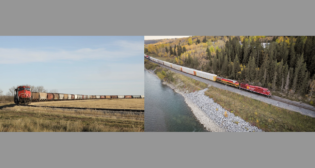
Caltrans unveils draft State Rail Plan
Written by Mischa Wanek-Libman, Editor, Railway Track & Structures; and Engineering Editor, Railway Age“The California State Rail Plan will establish a vision, set priorities, and present implementation strategies to enhance passenger and freight rail service in the public interest,” Caltrans wrote on the plan’s website.
The plan includes integration of high speed rail, intercity, and commuter rail that is consistent with the California High-Speed Rail Authority’s (CHSRA) California High-Speed Rail Program Revised 2012 Business Plan. Additional highlights include:
•The CSRP describes the planned passenger rail system in 2025 when initial HSR operations are anticipated to be in effect.
• The CSRP describes plans for expansion of existing commuter rail services and new commuter and intercity rail services. Execution of these plans is contingent upon funding and agreement of the railroad that owns the right-of way.
• California is a major origin and destination for freight rail traffic, given its market size and position in international trade flows. The expansion of the Panama Canal and other Pacific Coast port expansions are unlikely to change Pacific Rim trade that moves on California freight railroads. Regional planning studies have identified a series of projects that can resolve freight chokepoints and bottlenecks.
• The CSRP emphasizes the critical role Class I freight railroads play in international trade to California shippers and to the national rail network.
• The CSRP stresses the importance of large annual expenditures by Class 1 railroads in maintenance, capacity expansion, locomotives, and rolling stock. The plan identifies currently planned projects among four types of freight improvements totaling $15 billion.
• Many of the intercity and commuter rail services run on private Class 1 freight railroad right-of-way, which provides challenges and opportunities for both systems.
• Major conflicts in rail corridors will require careful coordination between multiple passenger and freight users.
According to Caltrans, the final plan will fully integrate California’s future high speed rail system with existing and proposed conventional rail systems, serve as a basis for federal and state investments for high speed and intercity passenger rail in California and will also describe the existing conditions of the state’s rail systems and the economic and environmental benefits of improvements.



